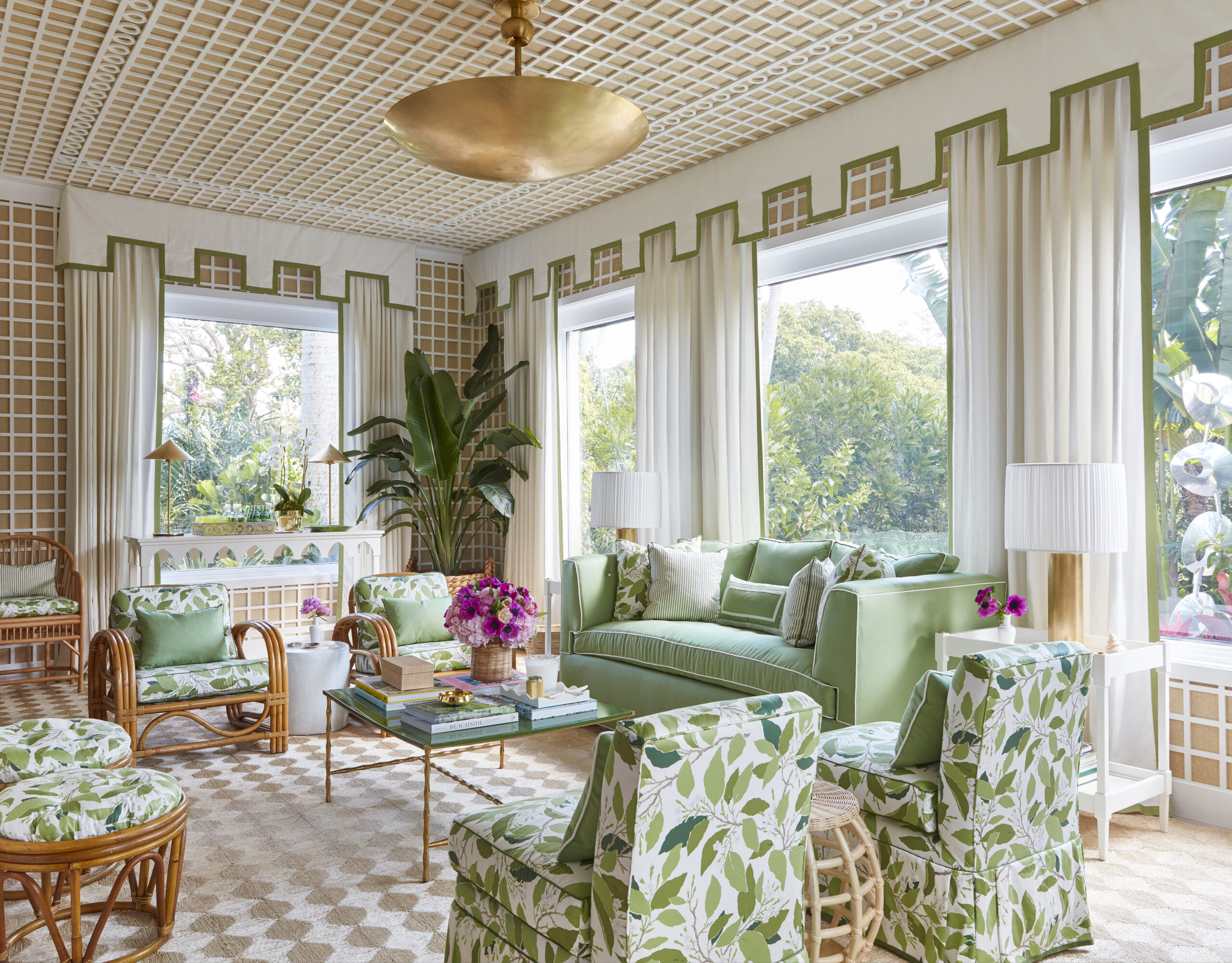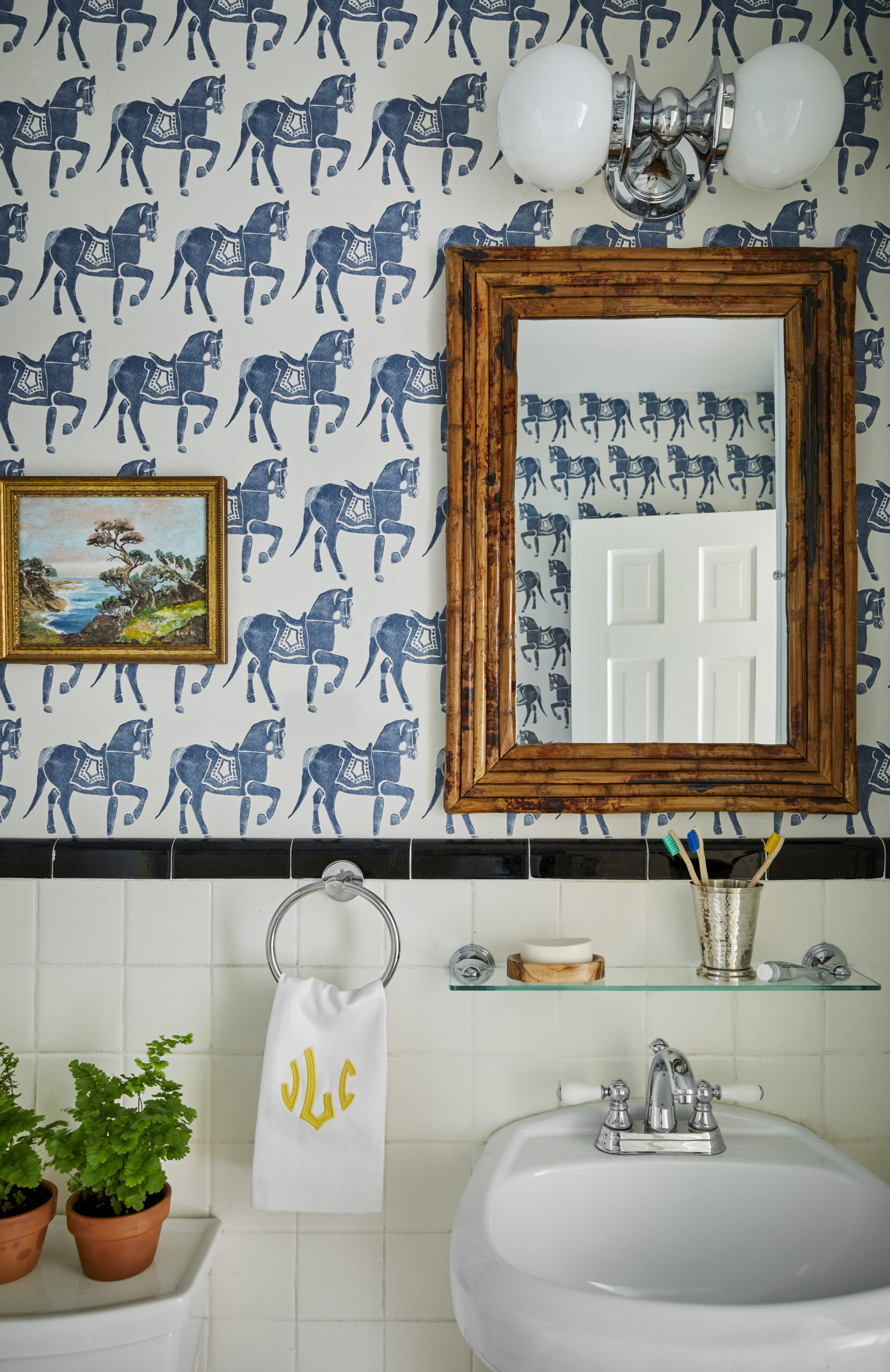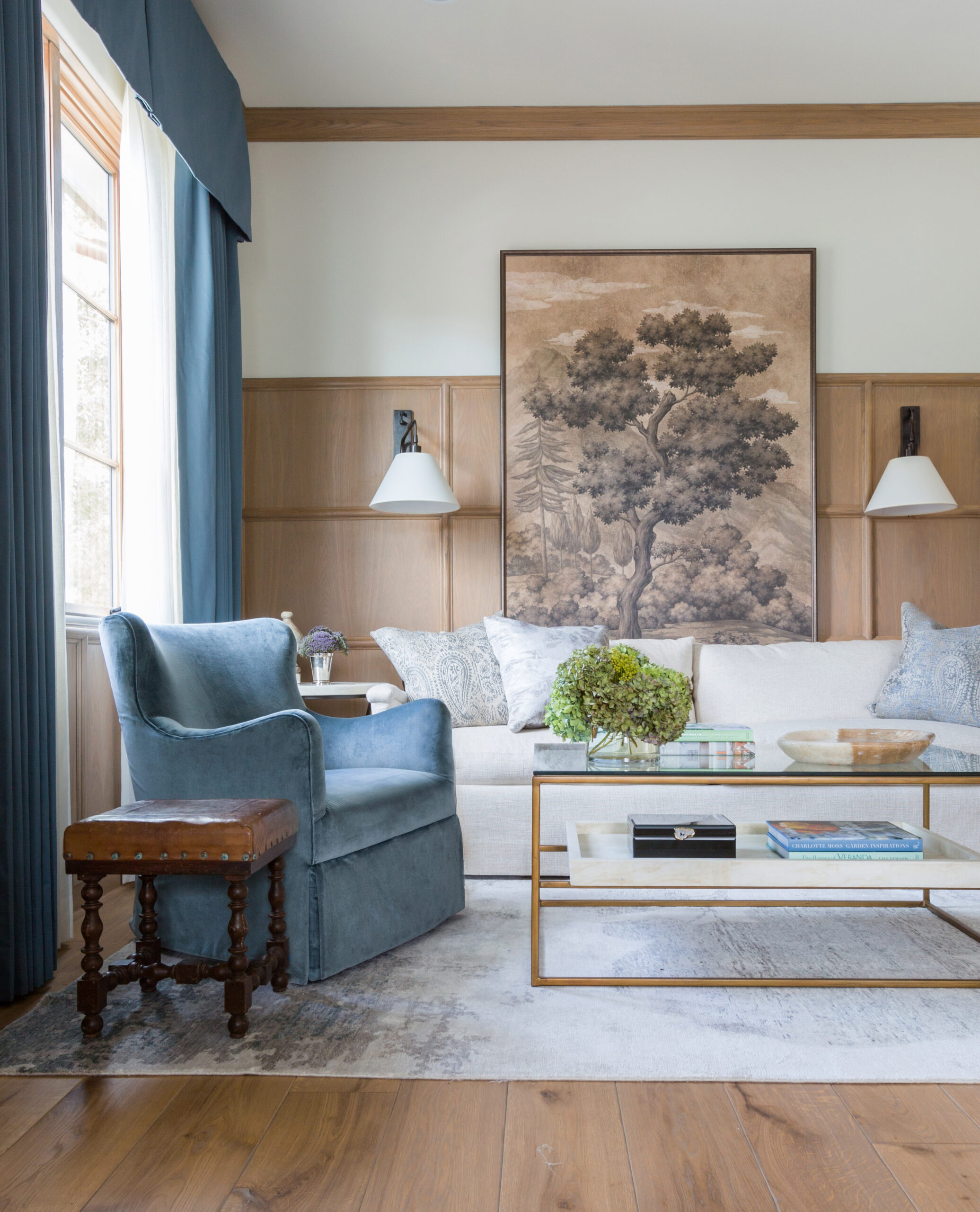We all know long-term relationships can be tricky—and client relationships can be especially so. And you have to decide very quickly whether you want to hop into bed with a client, often with very little information or time to build trust. That’s why we turned to three interior design pros who have seen it all to get the lowdown on successfully navigating designer-client dynamics. Paloma Contreras, Brian McCarthy and Will Cooper joined Benni Frowein, CEO of Schumacher Europe, to discuss how to set expectations and improve communication so you can avoid bad breakups with the people who matter most: your clients!
Meeting in Person Is a Must
You might have a few phone calls and some back-and-forth over e-mail with a potential client, but the true test of client relationships is the first in-person meeting, which New York-based interior designer Brian McCarthy likens to a blind date. “You either have that instinct that you want to work with them or not,” he says. “If I have any apprehension, I steer away from the project.”
Houston-based designer Paloma Contreras wholeheartedly agrees. She recommends taking the long view, because if anything sets off alarms in that first meeting, they will likely grow louder and more annoying down the road. “It really is about chemistry because it is such a personal, long-standing relationship. You have to enjoy one another’s company and communicate in a positive way.” She also suggests having the initial meeting in the client’s home whenever possible. That way you can see the space and make sure you’re excited about it, and—perhaps more importantly—judge if their design goals align with the project’s financial allocations.
In short: don’t ever sign a contract without a face-to-face

Paloma Contreras designed this lush and leafy sunroom for the Kips Bay Decorator Show House Palm Beach. Chairs and pillows in Schumacher’s Dogwood Leaf fabric by Miles Redd.
Carmel BrantleyLet Them Down Gently
If you decide it’s not a love match, say no in the nicest possible way. The “it’s not you, it’s me” approach always works: Tell the potential client that you don’t have the bandwidth their project deserves, for example. And then offer to help: Refer them to other designers who you think would be a better fit. “That always comes back in a positive way for me,” says designer Will Cooper, a former partner at ASH NYC. “Not only the client, but the people who end up getting the work are grateful.”
Spot the Red Flags
Our three design experts lay out the warning signs; if you encounter any of these, walk away! No amount of money is worth the misery that a bad relationship can cause.
- Someone who’s pushy about changing your contract. “Those procedures and policies exist for a reason,” says Contreras. “They most likely were put in place because something happened at some point. Issues arise when you take away those levels of protection.
- Having a third party—like an Owner’s Representative—wedged between you and the client. You always want a direct relationship.
- Bad dynamics between a couple. If there’s a lot of disagreement about the project during the initial meeting, it’s only going to get worse and cause problems later.
- People who don’t treat your staff with respect. If someone treats you with kindness but is dismissive of your employees, they may not be the nicest people to work with.
- A client who insists on hiring a contractor you’ve never worked with. Sometimes this can lead to a terrific new resource, and sometimes it can lead to doom. Do your research and vet any contractors thoroughly before agreeing to use them. If you suspect a contractor is trouble, be honest with the client and steer them toward other professionals.
Practice Radical Honesty
All three designers suggest front-loading your conversations. Provide as much information and specifics as possible at the outset. Be completely honest and transparent about potential issues—avoid discussing them, and they will only get worse. Contreras provides her contract up front, which reiterates her work process. She always goes over that carefully with every client to make sure expectations are aligned—and she includes standard work hours and preferred methods of contact. “Sometimes I get a text at 10 PM on Sunday and I can’t keep myself from replying right away, but at least we’ve set the expectation that we won’t respond until Monday morning.”
For his part, Cooper suggests being very clear about what is considered an additional service. “Of course you want to go above and beyond for your clients, but you have to make sure you are compensated for it. That is super important,” he says. “Make sure the client is aware: You’re getting three renders of this room out of your contract, but if you want to keep going to five, six and seven, you have to pay for it.” Be sure all your non-negotiables are worked out at the beginning, cautions McCarthy. For example, he’s often asked to sign non-disclosure agreements that prohibit photography. “We have to be able to photograph everything we do at completion—everything else is negotiable.”
A Picture Is Worth a Thousand Words
The budget needs to be very clear up front—and you need to take steps to make sure you and the potential client are on the same page. But sometimes people aren’t aware of what sort of numbers are realistic. In this case, Contreras suggests an exercise: Share tearsheets of rooms from books or magazines, or preferably from your own portfolio, and help the client get a feel for the level of quality. “As a designer, you’re able to sort of steer them and say, ‘Well, this sort of room costs $150,000 and this room is $400,000. That’s always quite eye-opening, and they can start to wrap their head around what an entire home might cost them.”
McCarthy also loves creating image books up front to help establish a point of view. “It also lets you know how they communicate, how they see. Can they read two-dimensionally or does everything have to be three-dimensional? It really goes back to the importance of communication in general.”
Money Talks
Even if you’ve taken pains to explain everything and establish a budget up front, it’s not unusual for a client to question costs or balk at paying a bill. Here’s how to keep from getting burned:
- Make sure you get paid before you start doing the work. McCarthy charges a non-refundable design fee that covers the block of time at the beginning of a project before he starts estimating costs. Contreras holds off on putting together a presentation until she collects a retainer.
- Always track your hours carefully in case a client questions your time. Then you’ll have an opportunity to educate them on why it took 9 hours to procure a set of drapes.
- Always have clients sign purchase orders and invoices. “Even if they’ve approved the fabric, the size, they’ve sat on the density of the foam or the down or whatever you’re making the sofa out of, they can still decide they hate it,” says Cooper. “But if they’ve signed the purchase order, you’re not stuck with a custom piece you can’t reuse someplace else. That’s so important.”
- Do your research on any items you recommend and be prepared for any questions that might come up regarding price. “1st Dibs exists, and if you show them a chair for $1,200 that’s listed for $600, they’re going to want to know why you’re suggesting something that costs more,” says Contreras.
- If they say they can buy a similar sofa for less than what you are charging them, educate them on the value you bring to the equation! “I call it illuminating the Twilight Zone,” says Cooper. “They don’t see me going back and forth and back and forth with an upholsterer, figuring out the yardage, the logistics, the storage. All of that is so much time. I can show them the hours spent on one piece. Do they have that kind of time?”
Want to listen to our full conversation about avoiding pitfalls in client relationships? Watch the full video with Paloma Contreras, Brian McCarthy, Will Cooper and Benni Frowein below, and be sure to follow Schumacher on YouTube for more interviews with interior design tastemakers and webinars on the business of design.



